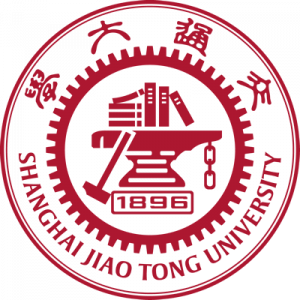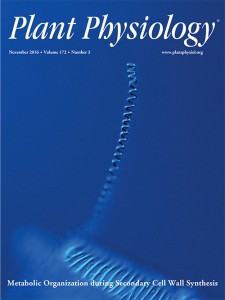International Research and Research Training Fund (IRRTF) – Network Center
A mechanistic understanding for plant biomass production in rice cells
This project brings together an outstanding, highly interdisciplinary and international team of plant cell biologists, biochemists and computational biologists from Australia, Germany and China. The major aim of the proposal is to understand how plant cells make cellulose, the main contributor to plant biomass. The project will open new collaborations between UoM and world-leading scientists at CAS-IGDB, the Max-Planck-Institute and the SJTU; a unique inter-disciplinary excellence cluster. We will provide important educational benefits to students and postdocs in a wide range of research topics through research exchange and symposia. The project outcomes will be published in top research journals, will generate industrial interest through the plant biomass focus, and will enable staff and students to get cross-disciplinary education.
The Partners:
 Staffan Persson: is a newly appointed R@MAP Professor, and an ARC Future Fellow, at the University. He is an expert in plant cell wall biology and his group has made substantial progress in understanding how the protein complex that synthesising cellulose works through high-definition confocal imaging, and has identified multiple new components that regulate the complex in Arabidopsis. He is a ChiangJiang scholar/visiting Professor at the HZAU Agricultural University in Wuhan, and thus already has strong connections with the Chinese plant science community.
Staffan Persson: is a newly appointed R@MAP Professor, and an ARC Future Fellow, at the University. He is an expert in plant cell wall biology and his group has made substantial progress in understanding how the protein complex that synthesising cellulose works through high-definition confocal imaging, and has identified multiple new components that regulate the complex in Arabidopsis. He is a ChiangJiang scholar/visiting Professor at the HZAU Agricultural University in Wuhan, and thus already has strong connections with the Chinese plant science community.
https://findanexpert.unimelb.edu.au/display/person658388
 Heather McFarlane: is was a McKenzie Fellow at UoM, and is currently an ARC DECRA awardee at UoM. She has a strong background in plant cell biology, including live cell imaging and high-resolution electron microscopy, and has published many highly regarded papers in these areas.
Heather McFarlane: is was a McKenzie Fellow at UoM, and is currently an ARC DECRA awardee at UoM. She has a strong background in plant cell biology, including live cell imaging and high-resolution electron microscopy, and has published many highly regarded papers in these areas.
https://findanexpert.unimelb.edu.au/display/person725325
 Yihua Zhou: is a Professor at the prestigious Institute of Genetics and Developmental Biology, CAS in Beijing. Yihua has made seminal discoveries of rice genes that contribute to cell wall synthesis through genetic and biochemical means. Her extensive knowledge in rice transformation, cell wall biology and genetics is central to the consortium and well fitting with the cell biology-based expertise in the Persson group.
Yihua Zhou: is a Professor at the prestigious Institute of Genetics and Developmental Biology, CAS in Beijing. Yihua has made seminal discoveries of rice genes that contribute to cell wall synthesis through genetic and biochemical means. Her extensive knowledge in rice transformation, cell wall biology and genetics is central to the consortium and well fitting with the cell biology-based expertise in the Persson group.
http://sourcedb.cas.cn/sourcedb_genetics_cas/yw/zjrc/pgr/200907/t20090721_2130982.html
 Zhaosheng Kong: is a Professor at the renowned Institute of Microbiology at CAS, Beijing. Zhaosheng has made important contributions to understand microtubule and actin organization and regulation in plant cells. His group and the Persson and Nikoloski groups are currently analyzing the microtubule and actin organization in cotton fibers through live cell imaging and quantitative analyses.
Zhaosheng Kong: is a Professor at the renowned Institute of Microbiology at CAS, Beijing. Zhaosheng has made important contributions to understand microtubule and actin organization and regulation in plant cells. His group and the Persson and Nikoloski groups are currently analyzing the microtubule and actin organization in cotton fibers through live cell imaging and quantitative analyses.
http://sourcedb.im.cas.cn/english/zjrck/fs/201301/t20130123_3755966.html
 Zoran Nikoloski: is a Max-Planck Research Group Leader and is world-leading in the field of bioinformatics and computational biology. He has developed pipelines to integrate and understand large-scale datasets to facilitate systems analyses of biological samples. He has also developed tools to register and segment image data from confocal microscopy and to understand underlying principles for patterns from imaging data.
Zoran Nikoloski: is a Max-Planck Research Group Leader and is world-leading in the field of bioinformatics and computational biology. He has developed pipelines to integrate and understand large-scale datasets to facilitate systems analyses of biological samples. He has also developed tools to register and segment image data from confocal microscopy and to understand underlying principles for patterns from imaging data.
http://www.mpimp-golm.mpg.de/13175/6nikoloski
https://www.uni-potsdam.de/ibb-bioinformatik/index.html
 Dabing Zhang: is a Professor at one of the C9 Universities (equal to Australia’s G8) in Shanghai and has been recently awarded a Doctor of Science (honoris causa) at the University of Adelaide. He is an outstanding rice geneticist and has largely been focusing his career on understanding rice reproduction and the function of the cytoskeleton in rice. The experience of his group in subcellular imaging of the rice cytoskeleton will be of great importance for the research team.
Dabing Zhang: is a Professor at one of the C9 Universities (equal to Australia’s G8) in Shanghai and has been recently awarded a Doctor of Science (honoris causa) at the University of Adelaide. He is an outstanding rice geneticist and has largely been focusing his career on understanding rice reproduction and the function of the cytoskeleton in rice. The experience of his group in subcellular imaging of the rice cytoskeleton will be of great importance for the research team.
http://life.sjtu.edu.cn/english/index.php/component/comprofiler/userprofile/Dabing%20Zhang
Projects/Summary
The program has four important aims: 1. To visualize the cell wall complexes in rice cells, 2. To identify and characterize cytoskeletal and trafficking components in Arabidopsis and rice that impact on cellulose production, 3. To establish computational tools to mine and understand the behavior of the cell wall complexes, cytoskeleton and trafficking components in living plants cells, 4. To assemble a model for how cell walls, and particular cellulose, are produced in plant cells.
Selected outputs:
1. Live-cell imaging of the cytoskeleton in elongating cotton fibres (2019) Yu Y, Wu S, Nowak J, Wang G, Han L, Feng Z, Mendrinna A, Ma Y, Wang H, Zhang X, Tian J, Dong L, Nikoloski Z, Persson S, Kong Z. Nature Plants (JIF: 11.3) https://www.nature.com/articles/s41477-019-0418-8
2. The cellulose synthases are cargo of the TPLATE adaptor complex (2017) Sanchez Rodriguez C, Shi Y, Kesten C, Zhang D, Sancho G, Ivakov A, Lampugnani ER, Sklodowsky K, Fujimoto M, Nakano A, Bacic A, Wallace I, Ueda T, Van Damme D, Zhou Y, Persson S. Mol Plant (IF: 10.2) http://www.cell.com/molecular-plant/fulltext/S1674-2052%2817%2930367-2
3. Carbon supply and the regulation of cell wall synthesis (2017) Verbančič J, Lunn JE, Stitt M, Persson S. Mol Plant (IF: 10.2) http://www.cell.com/molecular-plant/abstract/S1674-2052%2817%2930303-9
4. Two complementary mechanisms underpin cell wall patterning during xylem vessel development (2017) Schneider R, Tang L, Lampugnani ER, Barkwill S, Lathe R, Zhang Y, McFarlane HE, Pesquet E, Niittyla T, Mansfield SD, Zhou Y, Persson S. Plant Cell (IF: 8.8) http://www.plantcell.org/content/early/2017/09/25/tpc.17.00309
In brief highlight: http://www.plantcell.org/content/early/2017/10/03/tpc.17.00779
5. System-wide organization of actin cytoskeleton determines organelle transport in plant hypocotyl cells (2017) Breuer D, Nowak J, Somssich M, Ivakov A, Persson S*, Nikoloski Z*. Proc Natl Acad Sci U S A (IF: 9.6) *Co-senior authors http://www.pnas.org/content/early/2017/06/26/1706711114.full
6. A Transcriptional and Metabolic Framework for Secondary Wall Formation in Arabidopsis. (2016) Li Z, Omranian N, Neumetzler L, Wang T, Herter T, Usadel B, Demura T, Giavalisco P, Nikoloski Z, Persson S. Plant Physiol (IF: 6.5) http://www.plantphysiol.org/content/early/2016/08/26/pp.16.01100.abstract
Additional outputs:
A joint PhD program between UoM and the MPI-MP/UP: Faculty members from MPI-MP/UP and UoM decided to establish a joint PhD program in 2015, linked to the International Max-Planck Research School (IMPRS). A hallmark for this joint program is complementary research strengths and cross-disciplinary projects that will enable the students to get the best possible educational ground for their next scientific steps. The first students from this endeavour were recruited in early 2016, and 13 students are currently enrolled with joint supervision from UoM and MPI-MP/UP. Future projects are likely to involve CIs/PIs from Faculty of Science, Medicine, Dentistry and Health Sciences and from Engineering from UoM and will be based on project choices of the students. We have established documents that enable the PhD to be awarded from both the UoM and MPI-MP/UP. The Faculty of Science at UoM is firmly committed to the continuation of the program and have earmarked up to two international PhD student scholarships per year in 2019 and 2020. Likewise, at least two scholarships from the MPI-MP/UP IMPRS per year will be allocated towards the program for 2019 and 2020.
MPI-MP/UP – UoM joint PhD program http://science.unimelb.edu.au/engage/global-opportunities/melbourne-potsdam-phd-program
Staffan Persson becomes visiting Professor at SJTU. To facilitate better collaborations and interactions with SJTU, Staffan Persson has become a visiting Professor at SJTU starting May 1st, 2018. Staffan will spend approx 2 months per year at SJTU, and will aid in teaching and developing projects and apply for grants together with Dabing Zhang and his group.
See News here: https://blogs.unimelb.edu.au/persson-lab/news/

